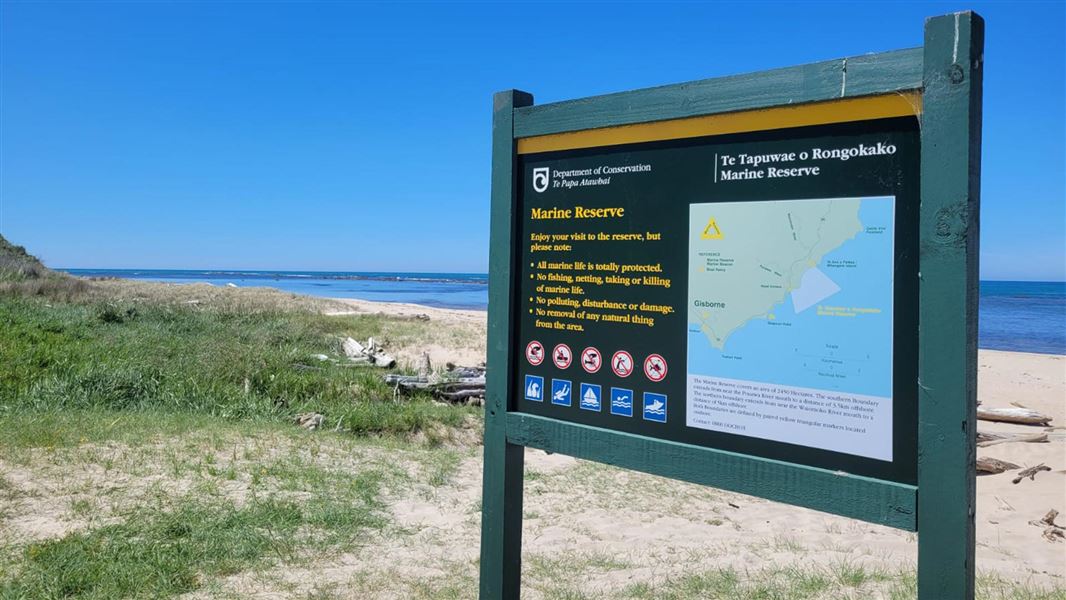Study: Fossils Reveal Reliable Record of Marine Ecosystem Functioning – University of Nevada, Las Vegas | UNLV

Report on Fossil Record Fidelity and its Implications for Sustainable Development Goals
Executive Summary
A study published in the Proceedings of the National Academy of Sciences offers critical validation for using the fossil record to inform marine conservation, directly supporting the objectives of Sustainable Development Goal 14 (Life Below Water). The research confirms that fossilized remains of marine invertebrates maintain high “functional fidelity,” accurately preserving the ecological roles of past ecosystems. This finding establishes a robust scientific basis for using paleontological data to set restoration targets and measure human impact on marine environments, which is essential for achieving global sustainability targets.
Study Overview and Methodology
The research, led by Professor Carrie Tyler of UNLV and Michał Kowalewski of the University of Florida, was conducted across 51 coastal sites in Onslow Bay, North Carolina. The methodology involved a comprehensive comparison of:
- Living marine communities
- Corresponding recent skeletal remains
- The local fossil record
The study was notable for its broad scope, analyzing over 200 species from six major invertebrate groups to ensure the findings were robust.
Key Findings: High Functional Fidelity
The results demonstrate that the fossil and skeletal records accurately capture the functional diversity of living communities. Essential ecological traits are well-preserved, including:
- Feeding strategies
- Mobility patterns
- Habitat utilization
Despite natural biases in the preservation process, the fossil record successfully archived nearly all functional roles present in the modern ecosystem. This confirms that fossils provide information not just on which species existed, but on how entire ecosystems functioned.
Direct Contributions to SDG 14: Life Below Water
This research provides a powerful tool for achieving targets under SDG 14, which aims to conserve and sustainably use the oceans, seas, and marine resources for sustainable development.
- Establishing Baselines for Restoration (Target 14.2): The study validates the use of fossil records to understand historical, pre-impact ecosystem states. This is crucial for managing and protecting marine and coastal ecosystems, as it provides a clear, evidence-based baseline for restoration efforts.
- Informing Conservation Strategies: By revealing which ecological functions have been lost over time due to human impacts, conservationists can develop more targeted and effective strategies to restore ecosystem health and resilience, a key component of sustainable management.
- Assessing Ecosystem Health: Conservation organizations can now more reliably use fossil data to compare the functional diversity of past and present ecosystems, providing a long-term perspective on biodiversity loss and overall ecosystem health.
Advancing Conservation Paleobiology for Sustainable Development
The findings significantly advance the field of conservation paleobiology, which applies paleontological data to solve modern conservation challenges aligned with the SDGs. This approach is critical for understanding long-term ecological change, particularly in a world where no ecosystem remains free from human influence. By providing a window into the past, the fossil record helps address a fundamental challenge in conservation: defining what a “healthy” or “restored” ecosystem should look like, thereby supporting the broader goals of both SDG 14 (Life Below Water) and SDG 15 (Life on Land).
Conclusion
The study, “Fossil samples archive functional diversity in marine ecosystems: An empirical test from present-day coastal environment,” confirms that the fossil record is a reliable archive of ecosystem function. Its application offers a scientifically-backed method for assessing long-term environmental change and developing informed strategies to protect and restore marine biodiversity, making a significant contribution to the United Nations Sustainable Development Goals.
Analysis of Sustainable Development Goals (SDGs) in the Article
1. Which SDGs are addressed or connected to the issues highlighted in the article?
-
SDG 14: Life Below Water
This is the most directly relevant SDG. The article’s entire focus is on marine ecosystems, discussing a new study on “fossilized remains of marine invertebrates” from “51 coastal sites.” The research provides a tool to understand and inform “modern conservation” for “today’s marine environments,” which aligns perfectly with the goal of conserving and sustainably using marine resources.
-
SDG 15: Life on Land
While the study is marine-focused, its principles are broadly applicable to ecosystem conservation and biodiversity, which are central to SDG 15. The concept of using the fossil record to establish a “baseline” for restoration is a key theme. The article states the study helps in “understanding both ancient ecosystems and the baseline conditions of today’s marine environments,” a methodology that supports the broader goal of halting biodiversity loss and restoring degraded ecosystems, whether on land or in water.
2. What specific targets under those SDGs can be identified based on the article’s content?
-
Target 14.2: By 2020, sustainably manage and protect marine and coastal ecosystems to avoid significant adverse impacts, including by strengthening their resilience, and take action for their restoration in order to achieve healthy and productive oceans.
The article directly supports this target by introducing a scientific method for restoration. It explains that the study helps conservationists “determine what needs to be replaced to restore the ecosystem to a healthy state” by providing a historical baseline of what a healthy ecosystem “used to look like.”
-
Target 14.a: Increase scientific knowledge, develop research capacity and transfer marine technology, taking into account the Intergovernmental Oceanographic Commission Criteria and Guidelines on the Transfer of Marine Technology, in order to improve ocean health and to enhance the contribution of marine biodiversity to the development of developing countries, in particular small island developing States and least developed countries.
The article is centered on a “new study published in the Proceedings of the National Academy of Sciences” that validates a method for using fossil data. This represents an increase in scientific knowledge and offers a new tool (“conservation paleobiology”) that can be used to “improve ocean health” by informing more effective conservation and restoration strategies.
-
Target 15.5: Take urgent and significant action to reduce the degradation of natural habitats, halt the loss of biodiversity and, by 2020, protect and prevent the extinction of threatened species.
The study provides a method to assess and counteract the loss of functional diversity, a critical component of overall biodiversity. The article states that conservation organizations can use this method to “compare the species present, the functions those species carry out, and the overall health of the ecosystem,” which are essential actions for halting biodiversity loss and reversing habitat degradation.
3. Are there any indicators mentioned or implied in the article that can be used to measure progress towards the identified targets?
- Functional Diversity: This is the primary indicator discussed. The article defines it through “key ecological traits such as feeding strategies, mobility, and habitat use.” The study’s main finding is that “fossilized remains of marine invertebrates can accurately reflect the functional diversity of past ecosystems,” making it a measurable baseline for restoration success.
- Species Composition and Richness: The study’s methodology involves comparing the species in the fossil record to those in living communities. The article mentions the study “included over 200 species from six major invertebrate groups.” The presence and abundance of key species serve as a direct indicator of biodiversity and ecosystem health.
- Ecosystem Health: While a broad concept, the article implies it can be measured by assessing the presence of necessary ecological functions. Progress is measured by how well restoration efforts replace “what functions are lacking within that ecosystem” to return it to a “healthy state.”
4. Table of SDGs, Targets, and Indicators
| SDGs | Targets | Indicators Identified in the Article |
|---|---|---|
| SDG 14: Life Below Water |
14.2: Manage, protect, and restore marine and coastal ecosystems.
14.a: Increase scientific knowledge and research capacity for ocean health. |
|
| SDG 15: Life on Land | 15.5: Halt biodiversity loss and reduce the degradation of natural habitats. |
|
Source: unlv.edu

What is Your Reaction?
 Like
0
Like
0
 Dislike
0
Dislike
0
 Love
0
Love
0
 Funny
0
Funny
0
 Angry
0
Angry
0
 Sad
0
Sad
0
 Wow
0
Wow
0














































.jpg.webp?itok=0ZsAnae9#)







:focal(1500,1000)/https://media.globalcitizen.org/a6/9a/a69a4720-d8a1-4715-b596-18738d03c05c/rotary_polio_hero_image.jpg?#)

/countries/sri-lanka/photo-credit---dmc-sri-lanka.tmb-1200v.jpg?sfvrsn=dc298bcc_1#)




















